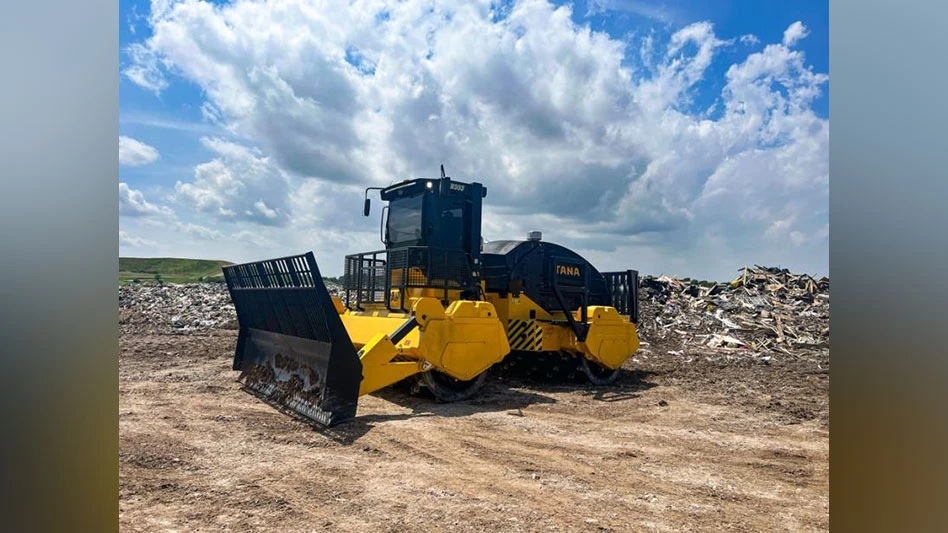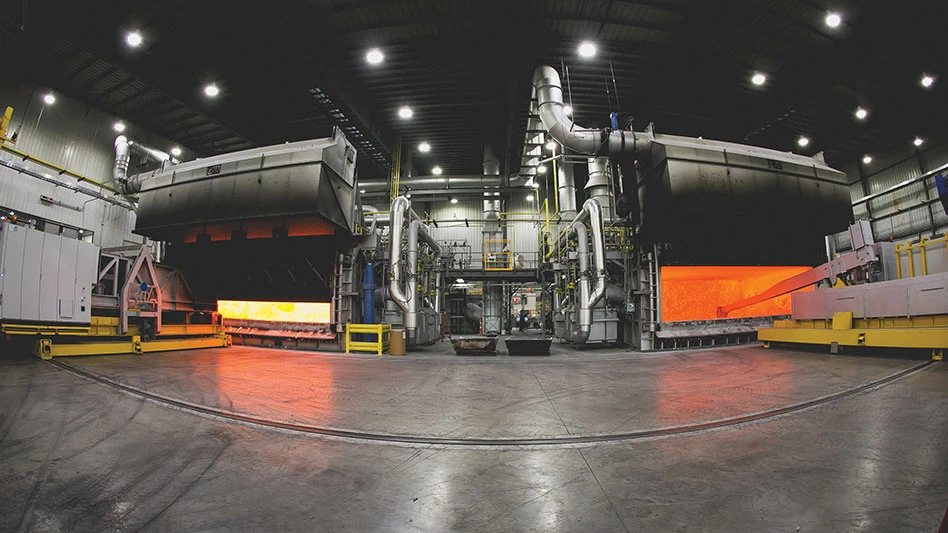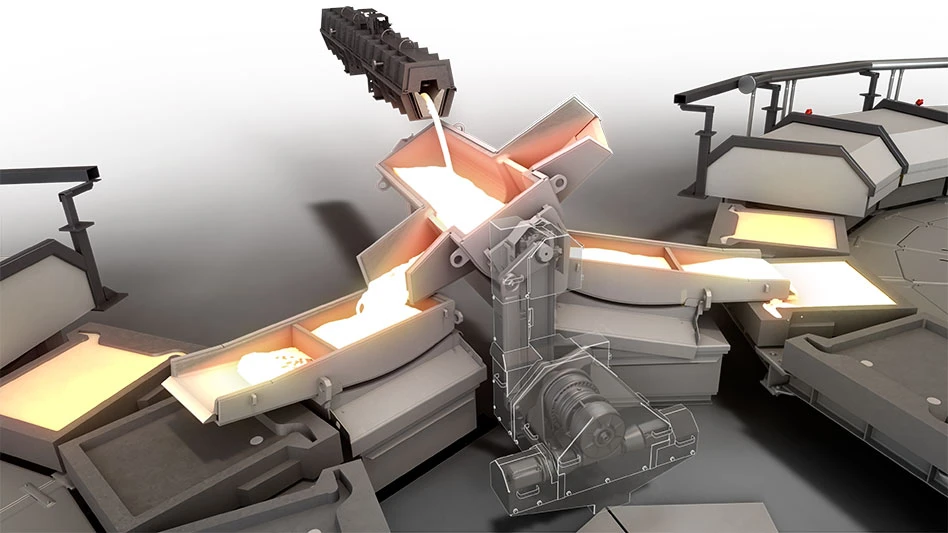Along with wire and transportation, electricity is a constant fixture among the operating costs facing recyclers who use balers and the conveyors that feed them. Typically, larger, faster balers use more electricity, but it’s difficult to boil the ins and outs of energy efficiency down to such a simple equation. Equipment manufacturers agree that even as baler designs become more efficient with every successive model, there are many ways to keep energy costs down while keeping production up.
Trimming Energy Costs. The first step toward becoming more energy-efficient is determining just how much electricity is being used. Simple equations can help business owners determine how much electricity their machines are using, says Roger Williams, sales manager for American Baler Co., Bellevue, Ohio. Just comparing horsepower figures isn’t enough, though, he says. Williams, along with many equipment manufacturers, recommends calculating kilowatt-hours per baled ton to get the most complete picture of energy usage.
Williams says to simply multiply the total horsepower of the baler by the motor’s service factor. Multiply the resulting figure by 0.75 twice to get the kilowatt-hours. Divide the kilowatt-hours by the hourly cost found on the monthly electric bill to determine the tons produced per kilowatt-hour.
"The more tons processed per hour, the lower the electrical cost per ton," says Richard Harris, managing director for Sierra International Machinery LCC, Keller, Texas.
Determining how much output recyclers see for the energy their machines use is a good start, but they can take additional steps to boost energy efficiency.
Using variable flow pumps is one way to minimize energy consumption, says Harris. "Most baler manufacturers use vane or gear-type pumps," he says. "These pumps have to go up to full system pressure and dump the hydraulic oil back into the reservoir on each stroke of the main cylinder." This results in maximum electrical usage, he says.
On the other hand, a variable flow pump only uses the fluid demanded to do the work, Harris says. "It’s a lot like comparing an automatic transmission to a standard transmission," he says. Harris adds that when using variable flow pumps, "the electrical motor does not have to operate at full capacity on each stroke."
Williams says that using intermittent motors also ups the efficiency factor. He says intermittent motors allow a machine to stop its motors during slow production times throughout the day and restart when the feed activates the controls.
Joe Szany, director of sales for the NexGen Baling Systems Division of Marathon Equipment, Vernon, Ala., agrees and says that not only does the ability to turn off the motors during slower production times save on energy costs, it can also save wear and tear on the motor itself.

Soft starts on main motors also help decrease energy costs, Williams says, by allowing larger motors to start at a lower voltage and then ramp up to full voltage.
He also recommends variable speed motors for energy savings. "If controlled by the baler, they will ensure that material is being applied to the baler at a rate that it can handle efficiently," Williams says. "This greatly reduces jams and overfeeding of fluffers, which keeps the baler continually running instead of being stopped while material is cleared from either the shear or fluffers."
Smooth Operators. But no matter what the equipment-set up, operators can play a role in increasing the efficiency of their balers.
Harris says efficiency can be undermined before the baling process even begins if the material is not sorted properly. He says a fundamental way to increase energy efficiency is to sort and stage the material before baling. "Once a significant amount of material is available, it is most efficient to bale all at one, reducing the number of hours of actual baling time," he says. "The faster the baler, the lower the electrical costs."
How material is fed into the baler also has an impact on energy efficiency.
"Stay away from the peaks and valleys," says Szany. "You don’t want a 6-foot mound coming in and then nothing." Szany advises running a steady stream of material through the machine for maximum efficiency. "You’ll get more out of the baler, and your bales will be more consistent," he says.
Keeping on top of the material being baled makes for the most efficient work, says Williams. "Staying ahead of the material being loaded on the conveyor ensures that whoever is loading the conveyor doesn’t have to wait on material being pushed over to him," he says.
Williams says coordinating the conveyor that feeds the baler is an integral part of maintaining an energy-efficient system. Although timing the infeed conveyor to work best with the baler might not change how much total electricity is used, it does increases production totals, he says, which reduces the kilowatt-hour per ton value, thus making more efficient use of the electricity. "With the baler and conveyor coordinated, the operator is ensured of keeping the baler operating at its fullest potential by not stopping and starting while waiting for more material," he says.
"It is essential to properly regulate the conveyors feeding the baler," Harris agrees. He says keeping the burden depth equal and the flow of materials into the baler constant is an important step operators can take to keep their machines working at the highest level of energy efficiency.
A dual feed conveyor system is often recommended to maximize efficiency, Dave Guyton, sales manager for Hustler Conveyor Co., St. Charles, Mo., says. The first conveyor moves the material from the tipping floor and is recessed below grade and travels at a slower speed, he says. It loads the material onto a second, inclined conveyor that feeds the material into the baler hopper, moving at a much faster pace than the first conveyor.
"In the transition from the first conveyor to the second conveyor, the material burden depth is greatly reduced," Guyton says. "The whole idea is to feed the baler with a consistent level of material so it operates with minimal stopping and starting. With this system, the baler is most efficient and consumes less electricity."
Sponsored Content
Still relying on manual sorters?
Let AI do the heavy lifting. Waste Robotics delivers reliable, high-performance robots tailored for complex waste streams. They require minimal maintenance, are easy to operate, and are designed to boost your recovery rates. Smarter sorting starts with the right partner. Waste Expo Booth #1969 & REMA #2843
Click here to see our robots in action!Guyton says the dual feed system runs more efficiently than more traditional systems that consist of only one conveyor and one baler. "With that design, the feed conveyor is stopped frequently and restarted, which uses more electricity," he says. "It’s also a slower process with lower production."
In addition, making larger, denser bales ultimately saves energy by cutting down on baling cycles and operating time, Harris says. "It is more efficient to make fewer and heavier bales," he says. "There will be fewer tying cycles, reducing electrical use and [using] less baling wire per ton," he says.
Maintenance Now Means Efficiency Later. As with any piece of equipment, keeping up with regular maintenance goes a long way in keeping machines running efficiently, says Szany. "Take some time and look over the machine each day," he says. "Look for the kinds of things that will keep your machine from running at peak performance."
Regular checks to make sure components line up properly and other planned maintenance pays off, Szany says. "A couple of hours a week beats being down during your busiest time," he says.
The author is assistant editor of Recycling Today and can be reached at jgubeno@gie.net.
Get curated news on YOUR industry.
Enter your email to receive our newsletters.

Explore the February 2005 Issue
Check out more from this issue and find your next story to read.
Latest from Recycling Today
- Unifi launches Repreve with Ciclo technology
- Fenix Parts acquires Assured Auto Parts
- PTR appoints new VP of independent hauler sales
- Updated: Grede to close Alabama foundry
- Leadpoint VP of recycling retires
- Study looks at potential impact of chemical recycling on global plastic pollution
- Foreign Pollution Fee Act addresses unfair trade practices of nonmarket economies
- GFL opens new MRF in Edmonton, Alberta







